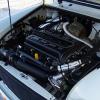A Thorough guide on what to look for and whats where, coming very shortly :cheese:
This will be a continiuosly updated topic so please feel free to add your results and fixes rather than discusion
http://www.theminifo...x...c=10173&hl=
http://www.theminifo...x...c=12722&hl=
http://www.theminifo...mp;hl=injection
http://www.theminifo...mp;hl=injection
http://www.theminifo...mp;hl=injection
http://www.theminifo...t=0#entry189478
http://www.theminifo...mp;hl=injection
First things to look for when your SPI engine is not running quite right are air leaks. These leaks are usualy the ends of the little black, red and yellow capilary lines, they tend to split as shown below and play havoc with the vacuum reading of the ECU. They should be a very tight fit and nothing less than excellent condition.

The main one that seems to cause a problem is the one on the end of the short capilary identified with white, from the back of the inlet manifold to the fuel trap. Located on this port on the back of the inlet manifold, again identified with white.

The fuel trap looks like this, has one short black port and long green port.

While on the subject of capilary tubes and fuel traps, there is a known problem of fuel causing blockage in these tubes, mainly the one identified with green, attached to the long green port of the fuel trap and the ECU at the other end. The symptoms of this are, hesitation when accelerating usualy acompanied with a backfire in the inlet manifold and the car usualy bucks violently. The only fix for this is to remove the tubes along with the fuel trap and blow through, remove the ECU and insert some cotton wool into the MAP ( Manifold Absolute Pressure) sensor port and place the whole thing on a warm radiator over night. This is what is suggested in in a Rover service bulletin. Also ensure the capilary ends are in nothing less than excelent condition as above. The MAP sensor port as shown.

Other locations of air leaks are the breather system hoses and the evaperative emissions control system. Check all rubber hoses are in good condition, no cracks or splits. The main breather hoses to check are the ones supplying the purge valve and the charcoal canister. They usualy leak at the purge valve shown here.

Edited by Sprocket, 24 July 2011 - 04:47 PM.



 This topic is locked
This topic is locked






































